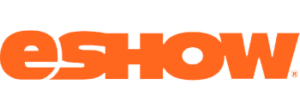Exhibitor Marketing is a surefire way to generate quality leads and increase brand awareness if done effectively. These industry-specific events allow you to showcase and promote your products to an audience that may have little knowledge of your services. Our industry experts at eShow offer a strategic guide on how to make your next exhibitor marketing campaign one of success.
Lead Retrieval
Lead retrieval is one of the most effective ways to share contact information and network on the event floor that in turn, transitions into qualifying leads. We recommend using a fully integrated lead retrieval system that offers both exhibitors and attendees a universal experience. Our on-the-ground experts equip you with all you need to know for attendee detail tracking, Excel reporting, CEU verification, and more. Self-powered and easy to use, our compact and portable units will help you take entrepreneurship to the next level.
Show Organizers
Set your next tradeshow up for success with a show organizer designed to optimize your tech stack. Lay the groundwork for long-term growth and expansion by developing a comprehensive strategy and plan of action. Look for a show organizer that provides you with the necessary tools to promote, sell, and manage your next exhibition or trade show. Utilize services like partnership outreach, market research, and more.
Exhibit Sales Management
Exhibitors want technology services that are straightforward and set them apart from the competition. With Exhibit Sales Management, users can easily select booths, add sponsors, and smoothly manage all functions of shopping and finances; they even get access to VEM Exhibitor Analytics for a smart, enhanced experience. Utilize our administrative tools to manage your exhibitors financially (and beyond) with reporting, eBlasts, invoicing, and more.
Attendees
Connecting to your target audience has become more crucial than ever. Engagement and exposure are at the forefront of exhibitor marketing, and we want to help you incorporate new opportunities for growth and ROI. Gamification has become more prominent over the last few years, and we don’t see it going away anytime soon. Gamification is known to spark engagement and increase lead capture more so than exhibiting booths that do not have activation or gaming features. Get ahead of the curve and integrate SmartMatch technology that will ‘wow’ your audience.
A few steps to ensure success from both exhibitor marketing expenditures and sales success:
- To ensure your company’s business objectives are incorporated into your trade show sales messages, collateral, product positioning, etc., it’s essential to establish specific, quantifiable goals that you want to achieve. Whether the show is online, in-person, or hybrid, the goals should be measurable and achievable.
- Once you have established your goals, write and design product and company brochures as well as any other necessary collateral. However, hold off on printing them for now as you may need to update them before the show.
- Create a pre-show email marketing campaign to inform prospects and customers that you will be exhibiting. Offer them a discount registration code if you have one, and let them know what products or services you will be showcasing at the event. This will help generate interest before the event even starts.
- After the show, create a post-show email marketing campaign to thank participants for attending and provide them with additional information on your company and products. This is an excellent opportunity to convert leads into customers by offering promotions, discounts or free trials.
- You should work with your sales team to determine what constitutes a qualified lead and come to an agreement on how the leads will be turned over to sales for immediate follow-up after the show.
- Establish clear protocols on how and when leads will be distributed to each salesperson as well as the follow-up process. By doing so, you will ensure that your sales team can effectively convert leads from prospects to customers.
Learn more about how eShow can help level up your exhibitor marketing with a personal demo. Our expert team is ready to find a customizable solution that fits your needs and ensures success at your next show.
For additional helpful resources, check out some industry partners we highly reccomend!
- Trade Show Executive Magazine
- IAEE – The International Association of Exhibitions and Events
- CEIR – The Center for Exhibition Industry Research
